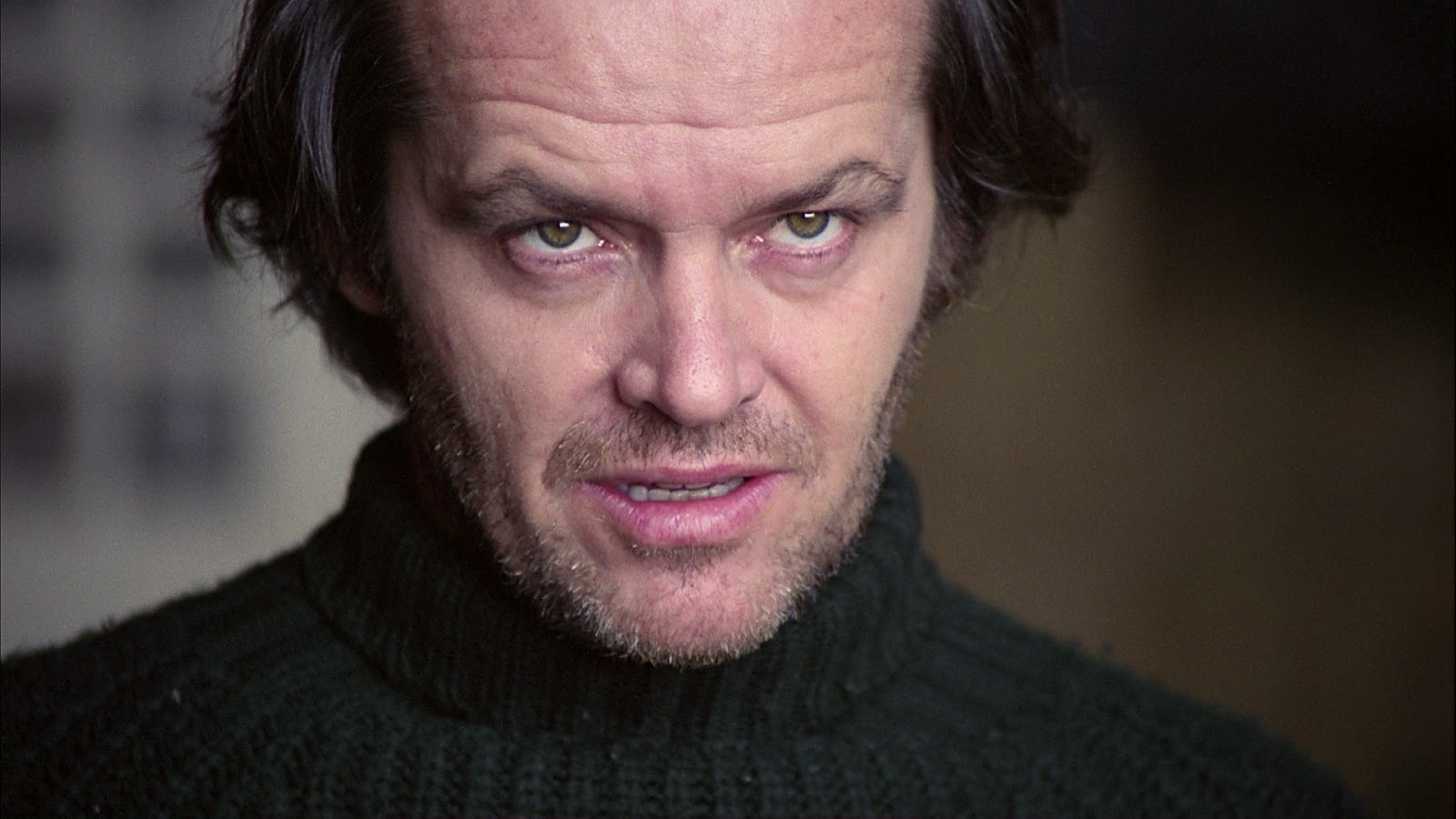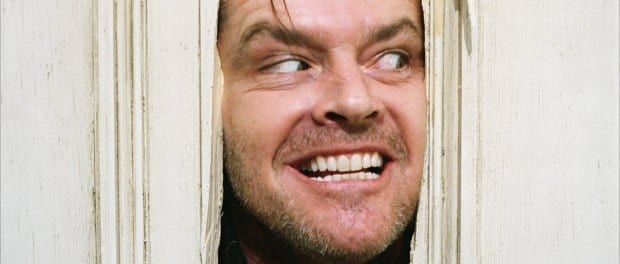Stanley Kubrick is a director renowned for his ambiguity and subtlety, and this is demonstrated none so much as in his 1980 adaptation of Stephen King’s The Shining. The film follows the Torrance family as they move into the Overlook Hotel for the winter as caretakers; Jack, the family patriarch (Jack Nicholson), is also in the process of a new writing project. Though he is warned of the severe isolation he and his family will have to endure over the coming months, Jack is positive that this will be just the experience he is looking for. What he and his wife, Wendy (Shelley Duvall), don’t know is that their son Danny is prone to visions – something the hotel’s chef refers to as “shining”. These visions suggest some horrific and disturbing things have occurred at the Overlook, and it’s not long before Jack is slowly influenced into committing some horrific and disturbing things himself.
[youtube=https://www.youtube.com/watch?v=S014oGZiSdI]
Throughout the film it’s clear that Jack is slowly being driven into madness, which is what eventually leads him on a violent rampage against his wife and son. What isn’t clear, however, is just what exactly is driving this madness: are there really spirits within the hotel that are influencing Jack’s thoughts; or is it simply “cabin fever”, as Jack’s boss put it?
Supernatural vs Insanity
One thing about the film that Stephen King was really unhappy with was the choice of Jack Nicholson in the lead role, as he thought viewers would be less surprised at his eventual descent into insanity, and you can see his point: Nicholson’s facial expressions combined with the character constantly looking bored and on edge make his descent seem almost warranted, but is it really ghosts that are pushing it? You can argue that in the cases of Lloyd and Grady that Jack is having a conversation with himself, that it’s simply his own unhinged conscience telling him to murder his family. You can also argue that since Wendy only sees the ghosts at the very end, when she is obviously going a bit mad herself, that the spirits are mere hallucinations that only appear as the Torrance family succumb to their individual traumas.
expressions combined with the character constantly looking bored and on edge make his descent seem almost warranted, but is it really ghosts that are pushing it? You can argue that in the cases of Lloyd and Grady that Jack is having a conversation with himself, that it’s simply his own unhinged conscience telling him to murder his family. You can also argue that since Wendy only sees the ghosts at the very end, when she is obviously going a bit mad herself, that the spirits are mere hallucinations that only appear as the Torrance family succumb to their individual traumas.
But what about Danny? He had visions long before the family moved to the Overlook so the hotel obviously never affected him the same way it did his parents; Halloran (the chef) even admits to Danny that awful things happened there – one which was actually explained by Jack’s boss at the beginning of the film – and that the hotel leaves traces of those things behind, hence Danny’s visions. Then there’s the pantry door supposedly being opened by Grady’s ghost and Jack’s face appearing in the photo of the Overlook’s 1921 4th of July ball – though Jack seemed somewhat unbalanced to begin with, it seems that an evil presence does exist within the Overlook that could sense this in Jack and ultimately just sped up the process.
The Colour ‘Red’
The constant presence of the colour red within the film only further backs up the idea of the hotel being supernatural. Red is featured so prominently that practically every scene brings on a  subconscious feeling of dread, as the colour is typically associated with danger and blood. In the bathroom scene towards the end, for example, the entire room is drenched in red which foreshadows the violence that is to follow. Red also used to be known as the “devil’s colour” so it’s most likely used to create a sense of evil within the hotel, which again backs up the previous theory. Not only does Jack appear to be talking to a ghost in this scene, but he is also being convinced to kill his family, so the extreme use of red is most appropriate here.
subconscious feeling of dread, as the colour is typically associated with danger and blood. In the bathroom scene towards the end, for example, the entire room is drenched in red which foreshadows the violence that is to follow. Red also used to be known as the “devil’s colour” so it’s most likely used to create a sense of evil within the hotel, which again backs up the previous theory. Not only does Jack appear to be talking to a ghost in this scene, but he is also being convinced to kill his family, so the extreme use of red is most appropriate here.
Mistakes or Intentional?
The Shining features a lot of weird mistakes that, while you may not notice them at first, are pretty hard to ignore once you see them. Given that the director is Kubrick however, who is well known  for his strict perfectionism, are these really mistakes? Or did Kubrick put them in intentionally to mess with our heads and thereby enhance the unsettling atmosphere? Things such as disappearing chairs, a typewriter that changes colour, a carpet that changes pattern, a TV with no plug, and a caretaker whose name randomly changes from Charles to Delbert all may appear to be “goofs”, but they still do a clever job of subtly informing the audience that there’s something not quite right with this place.
for his strict perfectionism, are these really mistakes? Or did Kubrick put them in intentionally to mess with our heads and thereby enhance the unsettling atmosphere? Things such as disappearing chairs, a typewriter that changes colour, a carpet that changes pattern, a TV with no plug, and a caretaker whose name randomly changes from Charles to Delbert all may appear to be “goofs”, but they still do a clever job of subtly informing the audience that there’s something not quite right with this place.
Words by Samantha King
